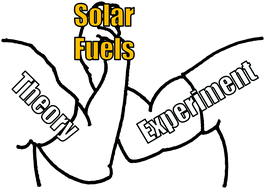Collaboration between experiment and theory in solar fuels research
Abstract
As the challenges in science increase in scope and interdisciplinarity, collaboration becomes increasingly important. Our groups have maintained close collaborations for solar fuels research over the past decade. Based on this experience, we discuss strategies for collaboration between experiment and theory including facilitation of effective communication and navigation of problems that arise. These strategies are illustrated by case studies of collaborative efforts in solar fuels research pertaining to interfacial electron transfer in dye-sensitized metal oxides and the design and mechanism of water-oxidation catalysts.

- This article is part of the themed collection: Advances in Solar Energy Conversion


 Please wait while we load your content...
Please wait while we load your content...
